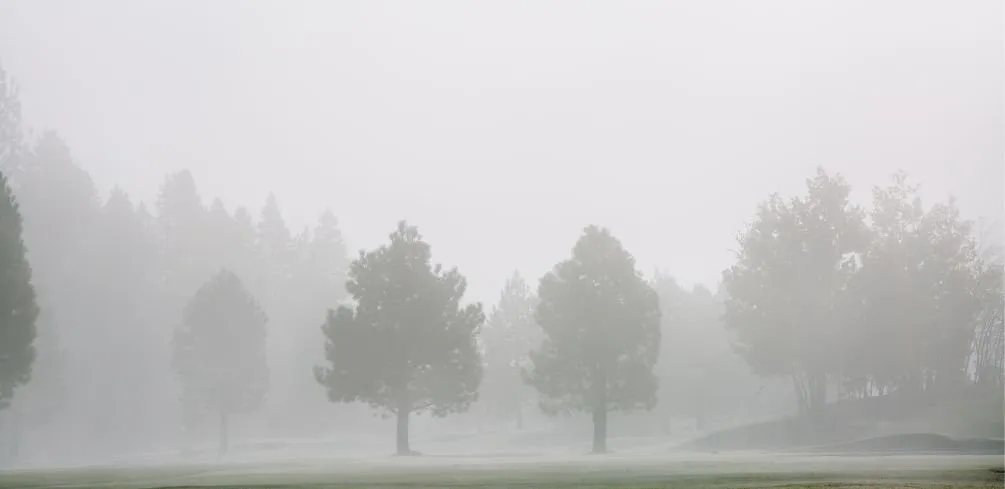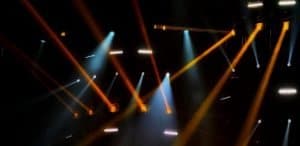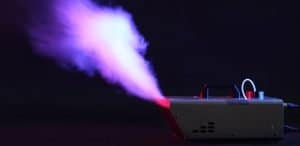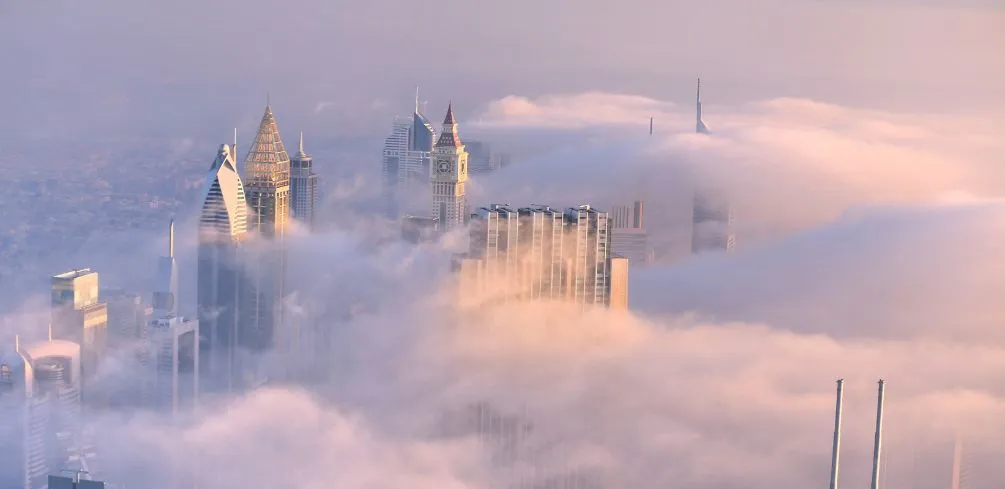Did you know that fog is a specific kind of ground-level cloud? A thick, foggy atmosphere is produced when moisture in the air condenses into small water droplets.
Fog machines are often used because they can give a spooky or mysterious mood to any occasion or location. However, if you’ve ever used a fog machine, you’re aware that the intensity of the fog can significantly alter the final result.
If it’s too thin, the fog might not even be discernible. If it is too thick, sight may be obstructed and a choking sensation may result.
In this post, we’ll show you how to use your fog machine’s density control to achieve the ideal atmosphere for any occasion. We’ll define fog density, discuss its influences, and give you step-by-step directions for changing the fog machine’s density.
These suggestions will enable you to produce the ideal fog effect whether you’re utilizing a fog machine for a party, theatrical play, or haunted house.
To control the density of your fog machine, you will need to consider various factors, such as the type of fog machine, the type of fog fluid, the size of the room or space, the temperature and humidity of the environment, and the output settings of the machine. Adjusting these variables can help you achieve the desired density of the fog.
What Is Fog Density?
The density of the fog created by a fog machine describes how intense the fog is. As it can have a significant impact on how the fog effect appears and feels in the room, it is an important consideration when operating a fog machine.
Thin fog, medium fog, and thick fog are the three most common types of fog. Fog can be thin and dispersed or heavy and concentrated, and both have different visual characteristics. Between thin and thick, medium density lies in the middle.
Which density setting you go with depends on the final result you want to attain. For a more delicate and ethereal mood, utilize light fog, while for a more dramatic and immersive effect, go for thick fog.
It’s also important to remember that elements like room size, ambient temperature and humidity, and the fog machine’s settings can all influence the fog’s density. Learning how to control the fog machine’s density in relation to these variables will allow you to create the ideal fog effect for any event.
Factors that Affect Fog Density
It is crucial to take the density of the fog being created into account while utilizing a fog machine. Fog density refers to its thickness or concentration, and it has a significant impact on how the fog effect appears and feels overall.
Understanding the variables that can affect the depth of the fog can help you create the ideal fog effect for any occasion.
The type of fog machine being used is one of the major variables that determine fog density. Varying kinds of fog generators employ various methods, and each kind of generator could result in fog with a different density.
For instance, some fog generators evaporate the fog fluid using a heating element, while others produce cold fog using dry ice or CO2. The density of the fog can also be influenced by the size and power of the fog generator since bigger, more potent devices might result in thicker, more concentrated fog.
The size of the area where the fog machine is being operated might also affect the fog’s density. While the fog could appear thicker and more concentrated in a smaller area, it might also appear thinner and more diffuse in a bigger area.
This is due to the fact that fog particles are less concentrated in smaller spaces where they have more room to spread. Fog density can also vary depending on temperature and humidity. In general, chilly, humid settings favor the formation and densification of fog.
This is due to the fact that cool, humid weather increases the likelihood of moisture in the air condensing into minuscule water droplets. As a result of the air’s decreased capacity to hold moisture, fog may be thinner and less dense in warm, dry environments.
Understanding the different elements that can affect the density of the fog will help you better manage the output of your fog generator and provide the ideal fog effect for any situation. These pointers can help you get the desired fog density, whether you’re utilizing a fog machine for a party, a theatrical play, or a haunted house.
You could wish to create an effect where the fog is incredibly dense and concentrated in some circumstances. This kind of fog is frequently employed in theatrical plays and film special effects, as well as to create a dense, eerie atmosphere in haunted houses and other immersive experiences.
High Density Fog
You’ll need a potent fog machine with a large output capacity to produce really high density fog. Additionally, you might need to use a specific kind of fog fluid made for thick, dense fog.
You should also think about the temperature and humidity of the surrounding area, as well as the size of the room or area where the fog machine will be deployed. The fog will typically be thickest in a small area with high humidity, whereas it will be thinner in a larger area in a dry climate.
It’s essential to keep in mind that producing very high density fog might be more challenging and may involve some trial and error to achieve the ideal look. In order to keep the fog machine functioning properly.
It could also need to be cleaned and maintained more frequently. The fluid tank may also need to be refilled more frequently. However, a very high density fog effect that may add a dramatic and immersive touch to any event or environment can be produced with the correct tools and methods.
Is High Density Fog Fluid Worth It?
High density fog fluid is a kind of fog liquid that is especially designed to produce dense, thick fog. It is frequently utilized in stage lighting, special effects, and other situations when a dense, all-encompassing fog is sought. Your particular demands and preferences will determine whether high density fog fluid is worthwhile.
High density fog machine fluid might have the ability to provide a more dramatic, immersive fog effect. High density fog juice can be worthwhile if you want to make a dense, concentrated fog that completely fills an area and gives your event or setting a dramatic feel. When combined with a strong fog machine or in smaller settings, it can be very effective.
On the other hand, not every application may call for high density fog fluid. A thinner, less dense fog machine fluid can be adequate if you only want to produce a faint, ambient fog effect.
High density fog fluid might not be the most cost-effective choice because it can be more expensive than other varieties of fog machine fluid.
Utilizing high density fog fluid will ultimately depend on your personal requirements and preferences. High density fog fluid might be worthwhile if you want to produce a dense, thick fog effect and are willing to pay a little bit more for it.
A less dense fog fluid would be a better option, though, if all you’re after is a light, ambient fog effect.
How to Adjust Fog Density in 5 Steps
The perfect fog effect can be achieved for each event by adjusting the density of the fog that a fog machine produces. Controlling the fog’s density is essential if you want to achieve a subtle, ethereal ambiance or a dense, immersive impact. Here are some detailed steps for changing a fog machine’s output’s fog density:
- The first step in altering the fog density is to select the ideal fog generator for your requirements. Think about the size of the area where the fog machine will be utilized and the required level of fog density. Smaller, lower-powered machines may be better for producing thin, diffuse fog, whereas larger, more powerful machines are often better for producing thick, dense fog.
- Choose the proper kind of fog juice since different kinds of fog fluid can create fog with various densities. For instance, certain kinds of fog machine fluid are created to produce dense, thick fog, while others are meant to produce thin, misty fog. Depending on the desired fog density, choose the appropriate type of fog fluid.
- Think about the temperature and humidity: As was already said, the environment’s temperature and humidity might affect the fog’s density. Generally speaking, warm, dry settings might result in thinner, more diffuse fog, while cool, humid environments are more likely to produce dense, thick fog. When setting the fog machine’s density, bear this in mind.
- Play around with the output settings: Most fog machines feature settings that let you regulate how much fog is created. Try out various output settings to see how they alter the fog’s density. For instance, increasing the output might cause the fog to be thicker and more concentrated, while decreasing the production might cause the fog to be thinner and more diffuse.
- You can fine-tune the density as necessary by making minor changes to the output settings or the kind of fog juice being utilized once you’ve discovered a general density level that you like. You can create the ideal fog density for any situation with practice and experimentation.
You can easily change the depth of the fog your fog generator produces by using the instructions and advice in this article to create the ideal fog effect for any occasion or setting.
FAQ on Fog Density
Conclusion
We talked about the significance of fog density and how a fog effect’s overall appearance and feel can be influenced by it in this article. The kind of fog machine, the size of the room or area, the temperature and humidity of the surroundings, as well as the fog machine’s output settings were all things we looked into as potential influences on fog density.
Last but not least, we included detailed instructions on how to change the density of fog created by a fog generator as well as advice on how to get the density you want. You may create the ideal fog effect for every occasion by being aware of these aspects and learning how to change the depth of the fog.
Please be careful and use at your own risk
None of the authors, contributors, administrators, or anyone else connected with Wild Fog, in any way whatsoever, can be responsible for your use of the information contained in or linked from these web pages.










